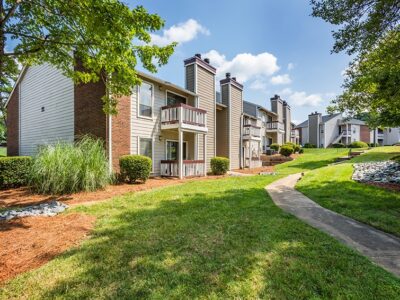This article was first published by National League of Cities on July 21, 2021.
Our work has always been dedicated to ending homelessness. But the complex nature of homelessness has challenged our notions of what it takes to solve it, over and over again.
In 2014, our organization Community Solutions announced the completion of an initiative known as the 100,000 Homes Campaign. 186 participating communities aimed to collectively house 100,000 of the most medically vulnerable Americans experiencing homelessness. In many regards, it was a tremendous success. Communities had increased housing placement rates for individuals experiencing chronic homelessness by over 200%, connecting more than 105,000 Americans to a home in under four years.
But there was a problem: none of those communities ended homelessness for a population.
Instead of helping communities count up to a certain number of housing placements, we needed to learn what it takes to count down to zero people experiencing homelessness. .
We have now worked with 14 communities that have achieved this aim for a population by achieving a milestone known as functional zero. They are participating in Built for Zero, a national initiative of more than 80 cities and counties dedicated to measurably and equitably ending homelessness.
In partnership with these cities and counties, we have had the opportunity to identify four necessary features of a system designed to drive and sustain reductions in homelessness.

“We know homelessness is solvable because communities are proving it every day. Together, we must work to help communities establish the resilient, equitable, and data-driven systems that will ensure this becomes the norm, rather than the exception.”
– Anna Kim and Beth Sandor of Community Solutions
A Unified Accountable, Community-Wide Team
One of the key challenges to ending homelessness is the distributed nature of homelessness response. In any community, dozens or even hundreds of organizations may serve people experiencing homelessness, each defining success by their own program measures.
Communities must begin by breaking down these siloes to establish a unified team that creates shared accountability across these efforts. In many Built for Zero communities, these teams are committed to working together weekly to examine how they can connect people to permanent housing, moving from a mentality of “my client” to “our clients.” They can see the system as a whole and collectively remove barriers that are impacting the whole population of people experiencing homelessness.
One community was able to find that the process for helping individuals into housing had organically and unintentionally been designed as a process that takes 42 steps and 300 days for a person to navigate. Only by working together could they take a line of sight across this entire system and begin to design something different.
A Shared Aim and Definition of Success
This fragmented system often means that no one has authority over or accountability for whether all those efforts and investments are adding up to overall reductions in homelessness over time — or whether those outcomes are equitable. This unified team must be grounded by a shared aim and operating definition of how they would know that they were making progress toward that goal.
In Built for Zero, communities start by setting a goal to measurably end veteran or chronic homelessness. Progress is measured by whether the number of people experiencing homelessness is going down, month over month, toward zero. The community knows it has reached its aim when it achieves functional zero, or fewer people are experiencing homelessness than can be routinely housed. This indicates not only that homelessness is rare across a population, but that resilient systems are in place to continuously reduce and end it. As communities sustain functional zero for a population, they expand their efforts to other populations, working toward systems that end homelessness for all.
While ending homelessness is a necessary pathway to an equitable future, we know that these efforts are influenced by the racism embedded in and across our country’s systems. Communities in Built for Zero are using a measurement framework to understand and improve the racial equity of a community’s homeless response system as it works toward getting to functional zero. The homeless response system — like any other system — must be explicitly set up to identify and respond to racial disparities if it is to avoid maintaining or even deepening them.
A Feedback Loop Based on Quality, Real-Time Data
In 2019, one community’s annual Point-In-Time count indicated a 24% rise in chronic homelessness. But as it worked with Built for Zero to gather quality, real-time data, the community found that the 24% increase was reflecting a natural variation that happens over the course of a year, depending on the month. In fact, toward the end of the year, the community had been driving steady reductions in homelessness.
A shift toward using data for improvement requires a more rapid, reliable, and actionable feedback loop to understand the nature and scale of homelessness at any given time. Communities in Built for Zero have quality, by-name data, which means that they deeply understand homelessness in their community in real time. This includes:
- Every person experiencing homelessness at any given time, by name and individual need.
- The total number of people experiencing homelessness, including sheltered and unsheltered populations.
- The systems dynamics behind those numbers, like how many people entered or exited from homelessness that month, and how many people returned from housing.
- The racial equity of a system, like system decision-making power, the experiences of those being served by the system, and disparities in systems outcomes, like length of time or rates of exit to permanent housing.
To better serve individuals, this data is used by agencies and organizations to connect people with the appropriate support and resources. At the population level, this data enables the community to understand whether investments and efforts are truly adding up to reductions in homelessness. Communities can strategize, test, and evaluate changes to their system — whether that requires looking upstream at other systems that are contributing to people entering into homelessness, or targeting barriers that exist for people working to exit homelessness. This data is also critical for equipping decision-makers with the information they need to advocate for and target resources to drive the greatest possible reductions.
Moving to Systems Designed to Get to Zero
The 100,000 Homes campaign was an important lesson for our team. We learned that taking immediate action to increase housing placements for people is worthy work, by many measures. But without deep systems change dedicated to getting to zero, it did not help communities design systems that could achieve or sustain population-level reductions.
Elected and municipal leaders across the country are facing tremendous urgency to act on homelessness. And through their influence, investments, and convening power, these leaders have a powerful role to play. This includes balancing the immediate actions that produce short-term gains with the deep systems change necessary to equitably and sustainably solve homelessness. To that end, we recommend that leaders ask the following questions in any conversation around ending homelessness:
- Are we all aligned behind a commitment to population-level reductions in homelessness as the critical measure of our success as a city/county?
- How will this support the community’s aim of functionally ending homelessness?
- Is the community currently driving population-level reductions in homelessness?
- How will this effort, investment, or intervention help communities drive population-level reductions in homelessness — and how would we know?
- Is real-time, by-name data informing these decisions, and where is that data coming from?
We know homelessness is solvable because communities are proving it every day. Together, we must work to help communities establish the resilient, equitable, and data-driven systems that will ensure this becomes the norm, rather than the exception.





